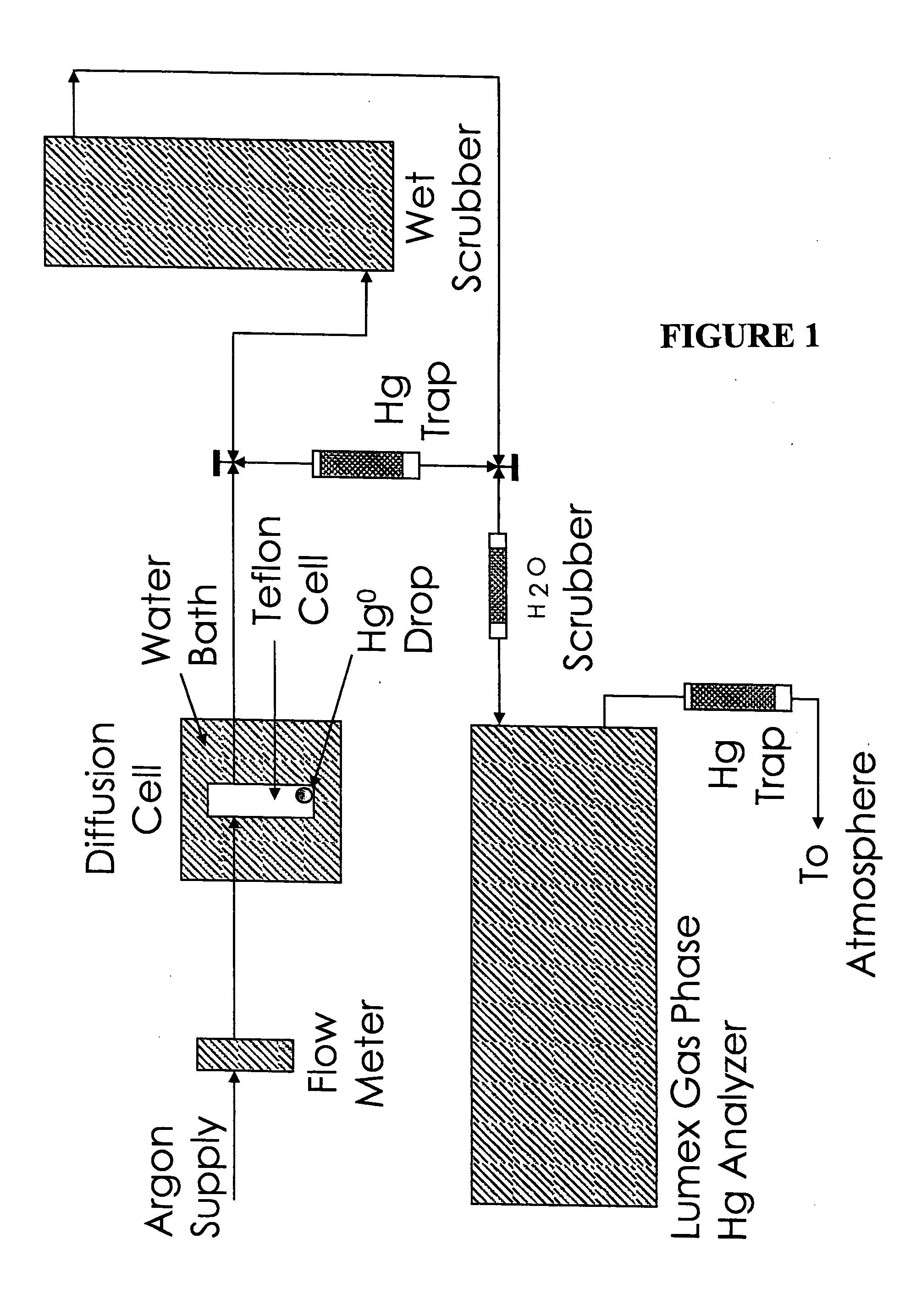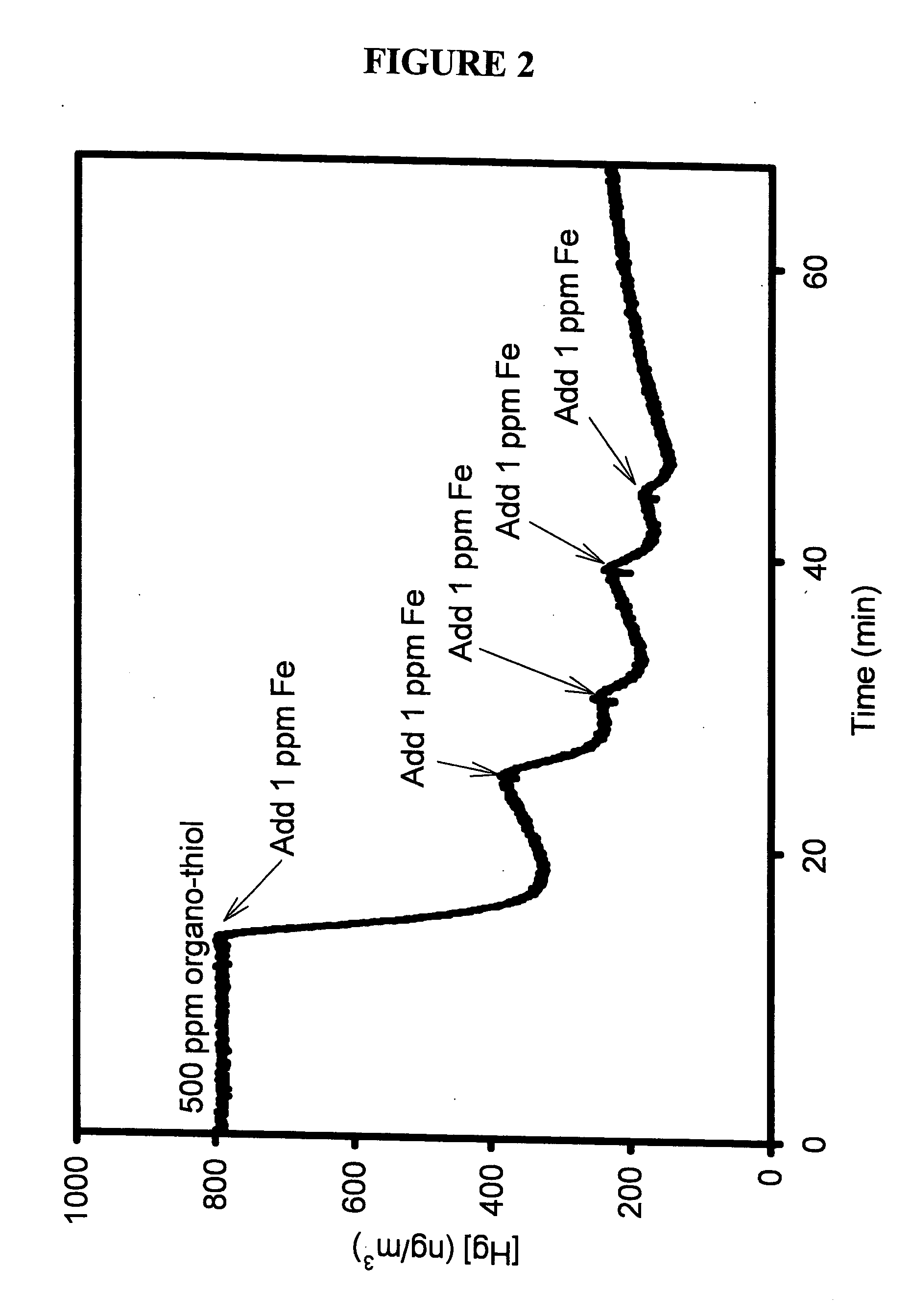Removal of elemental mercury from gas by modifying wet scrubber systems with an organic compound
a technology of organic compound and elemental mercury, which is applied in the direction of separation process, dispersed particle separation, chemistry apparatus and processes, etc., can solve the problems of mass mercury discharge and inability to remove trace mercury
- Summary
- Abstract
- Description
- Claims
- Application Information
AI Technical Summary
Benefits of technology
Problems solved by technology
Method used
Image
Examples
Embodiment Construction
[0019] The present invention is directed to a new and improved method for removing elemental mercury from gas. The method consists of adding an organic compound to the liquid used in wet gas-scrubbing systems. Not bound by theory, it is believed that the organic compound transfers the elemental mercury from the gas phase into the scrubber liquid, where the organic compound further complexes the mercury and precipitates it out of solution.
[0020] The postulated mechanism for the capture of elemental mercury by the organic compound is an initial gas-liquid surface interaction, where the elemental mercury associates and binds with the terminal groups on the organic compound. The organic compound then becomes neutrally charged and precipitates out of solution transferring the toxic metal into a bound solid form that can be easily separated. The general equation is speculated to be:
Hg0(g)+L(aq)→HgL(s)
where Hg0(g) is the elemental mercury in a gas, L(aq) is the dissolved organic compoun...
PUM
| Property | Measurement | Unit |
|---|---|---|
| concentration | aaaaa | aaaaa |
| volatile | aaaaa | aaaaa |
| temperature | aaaaa | aaaaa |
Abstract
Description
Claims
Application Information
 Login to View More
Login to View More - R&D
- Intellectual Property
- Life Sciences
- Materials
- Tech Scout
- Unparalleled Data Quality
- Higher Quality Content
- 60% Fewer Hallucinations
Browse by: Latest US Patents, China's latest patents, Technical Efficacy Thesaurus, Application Domain, Technology Topic, Popular Technical Reports.
© 2025 PatSnap. All rights reserved.Legal|Privacy policy|Modern Slavery Act Transparency Statement|Sitemap|About US| Contact US: help@patsnap.com



